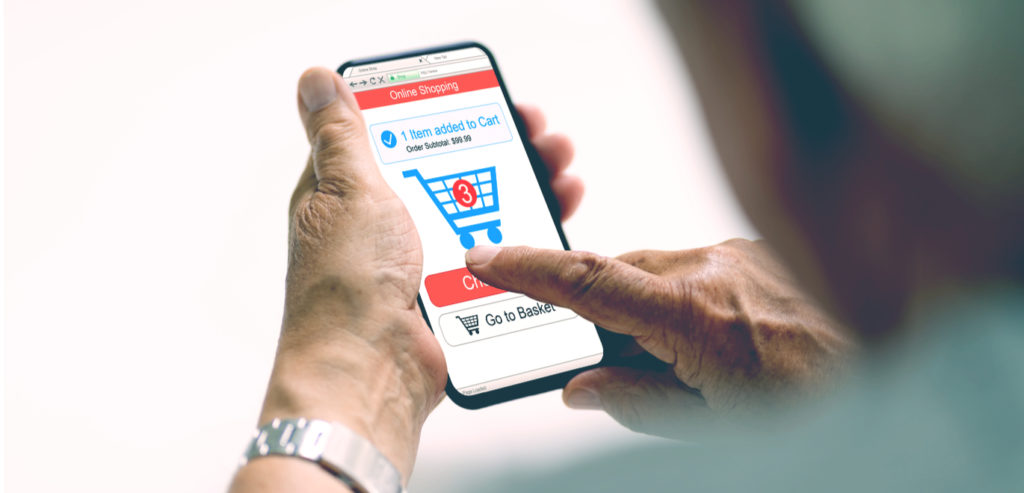
Yvan Boisjoli, CEO of Bold Commerce
Retailers are losing more than 70% of shoppers to cart abandonment. Many of them don’t realize that nearly half (48%) of the shoppers who move from cart to final checkout will still abandon their purchase. And on mobile, the number is even higher: 58% will abandon their purchase at checkout.
For retail brands that have long focused on finding the cure to cart abandonment, checkout abandonment is often still an unrecognized hurdle. These brands have another issue, too: Despite not having mastered getting more shoppers to complete transactions on their dedicated ecommerce channels, they’re now facing pressure to expand their checkouts to new digital channels not designed for ecommerce (think blogs, social media, or connected devices that are found on fitness equipment or within car dashboards).
Considering that brands haven’t overcome the obstacles that plague their conversions on channels designed for selling, how can they expect to get people to convert on channels where buying isn’t top of mind?
We recently reviewed checkout abandonment data from a subsection of the more than 90,000 brands we work with to identify the top seven issues that uniquely plague checkout—no matter which channel a transaction takes place. Here’s what we found and how retail brands can address these issues:
Retail brands don’t have enough—or have the wrong—payment options
Shoppers may intend to purchase when they enter the checkout, but if their preferred method of payment isn’t available, they’re quick to leave. 7% of shoppers will abandon a purchase simply because they can’t pay with the format they want to.
Consumers expect brands to cater to their payment preferences from digital wallets like Apple Pay or Shop Pay to buy-now, pay-later options like Afterpay and Klarna. This is especially critical for retail brands that sell products widely available from other retailers, who can easily win these customers by simply offering their preferred payment methods.
While 7% might not seem significant, it’s important to note that once retailers lose this 7%, they also lose all subsequent repeat purchases from these shoppers. Instead, retailers can convert them by supporting the most popular digital wallets and buy-now, pay-later options.
Checkout pages take too long to load
If it doesn’t load, consumers will leave a site after three seconds, so imagine what slow load speeds mean at checkout. When consumers make a decision, it’s imperative not to slow them down at the final steps of their transaction. It is not uncommon for slow load times to be just the thing to snap a shopper out of what might be an unconsidered impulse purchase mindset and into reality, where they become more objective and less likely to complete a nice-to-have purchase.
By increasing checkout load speeds alone, retail brands can combat as much as 30% of lost revenue at checkout.
Free shipping is not the only shipping-related consideration shoppers make
Brands that reinforce shipping thresholds throughout the shopper journey can help influence buying decisions. In addition to free shipping, shoppers should have a few additional shipping options at checkout, like faster shipping if they’re on a specific timeline or the opportunity to combine shipments (instead of ship-as-available) with being more environmentally friendly.
Hard-to-find coupon code fields are a dealbreaker. Literally.
Shoppers are discount savvy. During checkout, a poorly placed promo code field will have shoppers abandoning to find a code on the internet — and perhaps not ever coming back from their coupon scavenger hunt. Auto-applying relevant promo codes or placing the promo code field in the cart to make it easy to apply will give shoppers the savings they want and drive greater conversions for retailers.
Shopping experiences aren’t always mobile-friendly but need to be
By the end of 2021, experts predict more than half of all ecommerce sales will happen on mobile. With shoppers increasingly using their mobile devices to browse items and complete purchases, ecommerce experiences need to be mobile-friendly and if they’re not, brands risk losing customers.
Previously retailers had to choose which device type to optimize for or develop native mobile app. Emerging checkout solutions provide the ability to version the checkout experience by device type, enabling retailers to optimize for mobile and desktop with distinct checkout flows.
Customers don’t want to spend time creating accounts
This seems like a pretty obvious hurdle for retailers to address, but many still make guest checkout difficult to navigate or completely non-existent.
As a result, 24% of shoppers will abandon a purchase due to mandatory account creation. Creating an account causes an unnecessary step and adds extra time to the checkout process when all customers want is to make their purchase and move along quickly.
Account creation is useful for better understanding an individual shopper and making relevant recommendations, but the top priority at checkout should be closing the transaction. Once the purchase is complete, brands can then encourage and incentivize shoppers to create an account.
Some shoppers want their items the same day they buy them online
Convenience is key for today’s shoppers and the best way to achieve that is by serving up item availability at their local stores during checkout. This is especially true of big box and chain store retailers selling commodities that shoppers can pick up elsewhere the same day. 15% of shoppers will abandon their purchase if they can’t pick it up in a store. Shoppers highly seek this sort of convenience: Nearly 70% of shoppers have used BOPIS more than once. If they can’t get it from one retailer, they’ll move on to the next. And with the shipping delays looming this year, shoppers won’t take chances with delivery to get gifts in time for the holidays.
When done well, BOPIS can not only move shoppers through checkout but generate more online and in-store revenue.
While many retailers focus on addressing cart abandonment, checkout abandonment can be just as detrimental to the bottom line. By addressing these seven issues in the checkout, retailers can alleviate the friction that keeps shoppers from hitting that purchase button.
Bold Commerce is a software company that specializes in ecommerce websites and application development.






